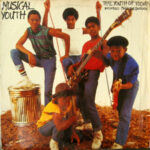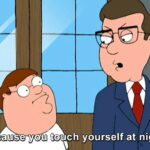 The Censored 11 refers to a series of eleven animated shorts produced by Warner Bros. during the 1930s and 1940s, which were later pulled from public syndication due to their portrayal of racial stereotypes, offensive imagery, and cultural insensitivity. These cartoons are often cited as an example of how popular media during that era perpetuated harmful depictions of African Americans, Native Americans, and other marginalized groups.
The Censored 11 refers to a series of eleven animated shorts produced by Warner Bros. during the 1930s and 1940s, which were later pulled from public syndication due to their portrayal of racial stereotypes, offensive imagery, and cultural insensitivity. These cartoons are often cited as an example of how popular media during that era perpetuated harmful depictions of African Americans, Native Americans, and other marginalized groups.
Despite being widely regarded as groundbreaking in terms of animation quality, the Censored 11 serve as a reminder of the racial prejudices that existed in American entertainment during the early-to-mid 20th century. These cartoons were never officially banned, but they were omitted from television broadcasts and home video releases by Warner Bros. after the 1960s, making them harder to access for subsequent generations.
Historical Context: The Animation Industry in the 1930s and 1940s
To understand why the Censored 11 cartoons were created and how they became notorious, it’s important to first look at the historical and social context of the time. The 1930s and 1940s were marked by deep racial inequality and segregation in the United States, even as the country began to make some advances in terms of civil rights. At the same time, the entertainment industry, including animation, was largely white and reflective of the prejudices and attitudes that were prevalent in society.
For many years, animated shorts were produced for a wide audience, with little regard for how they might impact marginalized communities. Racial stereotypes were a frequent trope in Hollywood films, radio shows, and cartoons. These stereotypes were often used as comedic devices, but they often relied on hurtful caricatures and exaggerated traits to depict African Americans and other groups in a negative light.
During this period, Warner Bros., which was a leading animation studio, produced numerous cartoons with characters like Bugs Bunny, Daffy Duck, and Porky Pig. However, alongside these beloved figures, the studio also produced cartoons that contained overtly racist content. The Censored 11 are the most famous examples of these problematic works.
The Censored 11 Cartoons: A Breakdown
The Censored 11 consist of eleven cartoons produced between 1931 and 1944. These cartoons were considered too controversial for television syndication, and as a result, they were effectively “censored” from the public eye. Here’s a list of the eleven cartoons that were officially banned from syndication:
-
Hittin’ the Trail for Hallelujah Land (1929)
This is the earliest of the Censored 11 cartoons, and it features deeply offensive portrayals of African American characters. The plot revolves around a minstrel show setting, with exaggerated caricatures of Black people and harmful stereotypes. This cartoon is infamous for its depiction of Black culture in an extremely derogatory manner. -
Sunday Go to Meetin’ Time (1936)
Another cartoon featuring racial stereotyping, Sunday Go to Meetin’ Time presents Black characters in a rural church setting, with exaggerated dialects and exaggerated physical features. The portrayal of Black people as subservient or comically naïve was a common trope in these early cartoons. -
The Isle of Pingo Pongo (1938)
This cartoon features an African setting and includes highly problematic depictions of native people. It reflects the “darkest Africa” stereotype, showing Africans as primitive, savage, and uncivilized. The portrayal is racially insensitive, reflecting colonialist attitudes toward indigenous peoples. -
All This and Rabbit Stew (1941)
This cartoon was produced during World War II, and it shows a depiction of an African American man hunting for Bugs Bunny in a manner that reflects racist tropes about Black people being “primitive” or overly obsessed with material gain. It also features language that mocks African American Vernacular English (AAVE). -
Coal Black and de Sebben Dwarfs (1943)
This is one of the most famous Censored 11 cartoons. A parody of Snow White and the Seven Dwarfs, Coal Black is heavily influenced by Blackface minstrelsy and features exaggerated depictions of African American culture. The use of African American jazz and swing music and the characters’ exaggerated features make it highly offensive, even though it was praised at the time for its animation style. -
Tin Pan Alley Cats (1943)
Set in a Harlem nightclub, this cartoon features African American characters and heavily relies on jazz music, but it also perpetuates harmful stereotypes. The characters are depicted as hyper-sexualized, and the setting is framed as a degenerate world where Black people are reduced to their relationship with music and dance. -
Jungle Jitters (1938)
A caricature of an African jungle setting, Jungle Jitters includes problematic depictions of native African people and uses grotesque stereotypes to characterize the setting and people. The use of exaggerated dialects and physical traits emphasizes the cartoon’s racist undertones. -
The Great Piggy Bank Robbery (1946)
This cartoon features Porky Pig as a detective investigating a crime in a racially charged setting. While the main focus is on the comedic antics of Porky, the inclusion of racial stereotypes (particularly toward Jewish and African American communities) makes it one of the problematic cartoons in the Warner Bros. vault. -
Goldilocks and the Jivin’ Bears (1944)
This cartoon is a parody of Goldilocks and the Three Bears, but it features African American characters in a way that uses jazz and swing music as a backdrop to reinforce stereotypes. The jive-talking bear characters are a direct nod to Black musical culture, but their depictions as lazy and bumbling are steeped in racial stereotyping. -
The King of Jazz (1930)
This cartoon features exaggerated performances by Black jazz musicians and reinforces the stereotype of the “wild” Black entertainer. Even though jazz was largely seen as a Black art form, the depiction here reduces Black musicians to caricatures of exuberance and uncivilized behavior. -
Bugs Bunny Nips the Nips (1944)
A product of wartime propaganda, this cartoon depicts Bugs Bunny engaging in battle with the Japanese during World War II. Though not part of the stereotypical racial portrayals of Black Americans, it is still part of the broader conversation around offensive depictions in Warner Bros. cartoons.
The Reasons for Censorship
Warner Bros. ceased syndicating these cartoons in the 1960s, not because of any legal action or widespread public outrage, but rather because the studio realized the material was no longer acceptable for mainstream consumption. At the time, the civil rights movement was gaining momentum, and the United States was beginning to come to terms with its history of racism and inequality.
By the late 20th century, the content in the Censored 11 was viewed as offensive and embarrassing, leading Warner Bros. to remove the cartoons from circulation. It wasn’t until the early 2000s that some of these cartoons, with appropriate context and disclaimers, began to see a limited release on home video, allowing audiences to study them as historical artifacts rather than entertainment pieces.
The decision to pull the cartoons was also influenced by changing societal attitudes toward race and representation in the media. In 1968, the production of children’s programming was subject to more oversight, especially in terms of racial representations. As the country began to confront the legacy of racial inequality, these cartoons became a symbol of how racial prejudices had been normalized in entertainment.
Cultural Impact and Legacy
Despite their initial popularity, the Censored 11 cartoons have left behind a complicated legacy. They were a product of their time, reflecting the racial attitudes of the 1930s and 1940s, but they are also a painful reminder of how the media perpetuated harmful stereotypes about African Americans, Native Americans, and other marginalized groups.
While some scholars and critics argue that these cartoons should be preserved and studied as historical documents, others contend that they should remain out of the public eye due to their offensive nature. The debate around the Censored 11 is part of a larger conversation about how to handle problematic works of art and entertainment from the past. Should they be celebrated for their historical significance, or should they be erased from public memory?
There is also the issue of the continued relevance of these stereotypes. Although much of the blatant racism in animated cartoons has been eliminated, modern media still struggles with issues of racial representation and bias. The conversation about the Censored 11 is a useful touchstone for exploring how far we’ve come—and how far we still have to go—in terms of how marginalized communities are portrayed in media.
Releases and Discussion in the Modern Era
The rise of DVD and Blu-ray releases in the 2000s led to the first widespread availability of the Censored 11 in home formats, often accompanied by disclaimers about the offensive content. On these releases, historians and cultural critics have included context explaining the cartoons’ racial implications and the historical norms of the era in which they were produced.
In particular, the 2005 DVD release of Looney Tunes Golden Collection Volume 3 featured many of the Censored 11 cartoons, along with commentary and educational material. The inclusion of these works with contextualization has sparked debate in academic and cultural circles about how we should engage with these historical artifacts. The release was met with mixed reactions: some praised the opportunity to discuss difficult topics, while others felt it was inappropriate to show these cartoons without significant disclaimers or, in some cases, any viewing at all.
Conclusion: A Reflective Examination of the Past
The Censored 11 cartoons are a fascinating and troubling part of animation history. While they demonstrate the creativity and technical skill of the animators at Warner Bros., they also serve as a reminder of the deep racial prejudices that permeated American culture during the early-to-mid 20th century. These cartoons offer a complex lens through which we can examine the intersection of race, media, and society during a time of deep racial segregation.
As we move forward, the debate over how to handle problematic works from the past will continue to evolve. The Censored 11 cartoons are just one example of how art and entertainment can reflect societal attitudes, both good and bad, and how those depictions can shape our understanding of history. Whether we choose to watch them, preserve them, or let them fade into the past, these cartoons are an important part of the conversation about race, representation, and media in America.
This post has already been read 9 times!









